Steel & Oak Brewing Co.
Intrinsic Wine Co.
Columbia Valley Cabernet Sauvignon
Smooth, jammy, hint of butterscotch, oak and blackberry. Earthy finish (not bitter or alcoholy) — 7 years ago
Stave & Steel
Bourbon Barrel Aged Paso Robles Cabernet Sauvignon 2015
The Tannins in this wine really come through. Great wine for the price if you like a deep oak wine. — 8 years ago
Liquid Farm
White Hill Sta. Rita Hills Chardonnay 2015
10% stainless steel fermented. 90 % neutral oak. Bright like a chablis! — 8 years ago
Rock Wall Wine Co.
Russian River Valley Chardonnay 2015
V15. Nicely balanced. Toasty nose. Buttery pear, Apple and soft honey kissed fruit. Creamy oak finish. — 8 years ago
Mer Soleil
Silver Unoaked Santa Lucia Highlands Monterey Co. Chardonnay 2013
Stone fruits, lemon, grass and steel. — 10 years ago
Chatham Vineyards
Church Creek Steel Chardonnay
Crisp with mineral notes. Steel barrel fermented so no oak but light buttery undertones. Super delicious and very impressive. Paired it with oysters pulled and shucked from the creek in the back at the vineyard. It doesn't get better than that! — 10 years ago
Bedrock Wine Co.
North Coast Syrah 2013
Matchbook Wine Co.
Old Head Dunnigan Hills Chardonnay 2012
Refreshing, bright Chardonnay, lighter hints of oak keep it balanced and smooth on the palate. tropical fruit and melon make this a fabulous summer chard! 2012 vintage $15.99, on the 5cent wine sale at BevMo — 11 years ago
Clos du Val Wine Co.
Oak Vineyard Cabernet Sauvignon 2001
So smooth. So yummy. Aged excellently. — 12 years ago
Cedar Knoll Vineyard Co (Palmaz)
Hagen's Reserve Cabernet Sauvignon 2015
A great Cabernet from Napa Valley. Showing red and black fruits with earth, tobacco, vanilla, licorice, spices and Cedar.
Good right out of the bottle and better as it opens up (a couple of hours).
Aged for 24 months in French oak barrels. A blend of Cabernet, Merlot, Petit Verdot and Cabernet Franc.
Still young and needs 5 to 10 years of bottle time.
14.5% alcohol by volume.
91 points.
$80. — 7 years ago
Pali Wine Co.
Summit Sta. Rita Hills Pinot Noir 2013
Currants, dried strawberries, and dark cherries, with spice, oak, and I think even a little cocoa, maybe orange peel too. This is darker and deeper than a lot of west coast Pinots. The acidity is pretty strong and balanced the dark fruit well. Tannins are moderate to light. I had this with salmon, roasted potatoes, and cabbage cooked in duck fat. The salmon was farmed and a little too light for the wine, but cabbage in duck fat was a treat with this. — 7 years ago
Château Brane-Cantenac
Grand Cru Classé en 1855 Margaux Red Bordeaux Blend 2005
I have a six-pack of this 05. I thought after 10 years in bottle, it would be interesting to check in on its evolution. While tasty, I’ll wait another 8-10 to open another. Even after 2-3 hours in the decanter, it’s still a very young adolescent. On the nose, slightly sour blackberries & dark cherries, dark currants, baked black plum, haunting blue fruits, anise, whiff of spice, steeped tea, dry stones, dry crushed rocks with dry top soil, caramel, vanilla with fresh & dry red florals. The body is thick & full. Tannins are starting to round out. It’s velvety on the palate. The fruits are; bright, fresh & ripe and really show the greatness of the 05 vintage. Dark currants, blackberries, dark cherries, baked black plum, haunting blue fruits, baked strawberries, cherries, raspberries on the long set, dark spice, clay & loamy dry top soil with crushed rocks, dry stones, cigar with ash, graphite, dry stems, slight herbaceous character, mint, used leather, clove, caramel, vanilla, fresh & dry red florals with violets. The round acidity is about perfect. The structure and length are still strong. The balance is in harmony. As for the long finish, it’s lush, ruby, rich and well polished. Photos of; Chateau Brane Cantenac, large wood vats, Henri Lurton and Estate vines. Producer notes and history...Chateau Brane Cantenac began in the early 17th century. At the time, the estate was known as Domaine Guilhem Hosten. Even that far back, wine was produced from the property. In fact, the wine was so highly regarded it was one of the more expensive wines in Bordeaux. It sold for almost as much money as Brane Mouton. This is interesting because of who went on to buy the vineyard in the 1800’s. The Baron of Brane, also known as “Napoleon of the Vineyards”, purchased the Chateau in 1833. At the time of the sale, the estate was called Chateau Gorce-Guy. To get the funds needed to purchase the Margaux vineyard, the Baron sold what is now called Mouton Rothschild, which was at the time of the sale, known as Chateau Brane-Mouton. Not such a good move with hundreds of years in hindsight! In 1838, the Baron renamed property taking his name and the name of the sector where the vineyards were located and called it Chateau Brane Cantenac. The Chateau later passed to the Roy family, who were well-known in the Margaux appellation in those days, as they owned Chateau d’issan. Moving ahead to 1920, the Societe des Grands Crus de France, a group of merchants and growers that owned several chateaux located in the Medoc including; Chateau Margaux, Chateau Giscours, and Chateau Lagrange in St. Julien, purchased Chateau Brane Cantenac. Five years later, M. Recapet and his son-in-law, François Lurton, took over Brane Cantenac along with Chateau Margaux. Lucien Lurton (the son of François Lurton) inherited Brane Cantenac in 1956. Today, the estate is still in the hands of the Lurton family. Brane Cantenac is owned and run by Henri Lurton. After being given the responsibility of managing Brane Cantenac, it was under the direction of Henri Lurton that large portions of the vineyard were replanted. Vine densities were increased, the drainage systems were improved and the plantings were also, slowly changed. The vineyard of Brane Cantenac is planted to 55% Cabernet Sauvignon, 40% Merlot, 4.5% Cabernet Franc and .5% Carmenere. Carmenere was used for the first time in the 2011 vintage. The only other Chateau I know that still uses Carmenere is Clerc Milon. The 75 hectare Left Bank vineyard of Brane Cantenac is essentially unchanged since it earned Second Growth status in the 1855 Classification. At least that is the case with the 45 hectares used to produce the Grand Vin of Brane Cantenac. Those 45 hectares are planted surrounding the Chateau. Those vines are located just in front of the Cantenac plateau and are the best terroir that Brane Cantenac owns. They have other parcels, which are further inland and much of those grapes are placed into their second wine, Le Baron de Brane. Those additional hectares can be divided into 3 main sections. Behind the Chateau, they have 15 hectares of vines on gravel and sand, 10 hectares across the road with sand, gravel and iron and a 13 hectare parcel with gravel called Notton, which is used for their second wine. The vineyard is planted to a vine density that ranges from 6,666 vines per hectare on the plateau and up to 8,000 vines per hectare for the vines located behind chateau, in their sandier soils. The higher levels of vine density are always found in the newer plantings. The terroir of Brane Cantenac consists of deep gravel, sand and clay soil. Experiments in the vineyards are currently looking at becoming more organic in their vineyard management. Today, more than 25% of Brane Cantenac is farmed using organic farming techniques. It is expected that over time, the amount of hectares farmed with organic methods will be increased. Brane Cantenac has gone through 2 relatively recent modernization’s in 1999, when they added began adding the first of their smaller vats to allow for parcel by parcel vinification and then again in 2015 when they completed a much more complete renovation of their cellars and vat rooms. While Brane Cantenac is a traditional producer, they are no stranger to technology as they were one of the first estates to embrace optical grape sorting machines. In very wet vintages, they can also use reverse osmosis. To produce the wine of Chateau Brane Cantenac, the wine is vinified in a combination of temperature controlled, traditional, 22 oak vats, 18 concrete tanks and 20 stainless steel vats that vary in size from 40 hectoliters all the way up to 200 hectoliters, which allows for parcel by parcel vinification. 40% of the fermentation takes place in the oak vats. The oldest vines are vinified in vats that are selected to allow for separate parcel by parcel vinification. The younger vines are vinified more often together in the same vats. However, the Carmenere is entirely micro-vinified, meaning that those grapes were completely vinified in barrel, using micro-vinification techniques. This can also happen because the amount of grapes produced is so small. Some vats can be co-inoculated, meaning they go through alcoholic fermentation and malolactic fermentation simultaneously. At Chateau Brane Cantenac, malolactic fermentation takes place in a combination of French oak tanks and barrels. The wine of Brane Cantenac is aged in an average of 60% new, French oak barrels for 18 months before bottling. The initial 2 months of aging is done with the wine on its lees, which adds more depth to the wine. There second wine is Le Baron de Brane. Le Baron de Brane is not new. In fact, previously, the second wine went under the name of Chateau Notton, which took its name from one of the main parcels where the grapes were planted. During the late 1950’s and into the 1960’s, having a second wine was important as the estate declassified 3 vintages, due to extremely poor, weather conditions in 1956, 1960 and 1963. Production of Chateau Brane Cantenac is about 11,000 cases per year. — 8 years ago
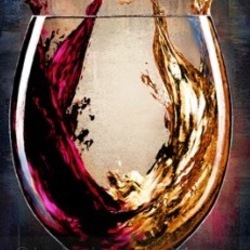
Winderlea Vineyard and Winery
Willamette Valley Chardonnay 2011
French Oak + Stainless Steel
$38 at winery — 11 years ago
Clos du Val Wine Co.
Carneros Chardonnay 2009
A California Chardonnay that actually knows when to stop with the oak. Very pleasant balance of fruit and acidity. — 12 years ago
Calicraft Brewing Co.
Oak Town Brown Ale
an almost perfect brown ale — 13 years ago
La Jota Vineyard Co.
Howell Mountain Cabernet Sauvignon 2015
The 2015 Cabernet Sauvignon by La Jota is a seductive blend of 75% Cabernet Sauvignon, 8.5% Cabernet Franc, 7.5% Merlot, 6% Malbec and 3% Petit Verdot which was aged for 22 months in 65% new French oak prior to bottling. Needing more than a two hour decant at this juncture, the wine takes on glorious creme de cassis, Turkish coffee, blueberry cordial and wild thyme aromatics. The palate shows marvelous complexly and range. Black tea, blueberry compote, mocha and blackberry pie flavors all beautifully mingle in the glass. Rich and layered, this hedonistic effort will cellar marvelously for decades. Be sure to give this at least a two hour decant if enjoying in its youth. Drink 2020-2045- 95 — 7 years ago
Badet Clément & Co.
Pontificis Grenache Blend 2015
This wine’s bouquet brings to the fore memories of the sea. Once I take a sip, I picture a tapas restaurant with mahogany paneling, ambience lighting, and linen tablecloths.
At first taste, well-balanced. Perfect rich and tart berry flavors with a hint of natural vanilla and oak. Not too tannic and light & bouncy on the tongue. For me, I would love this with whitefish ceviche, tacos, and/or pasta.
Versatile and affordable.
Reminds me of a platitude I live by in terms of wine (and life), “If it tastes good, drink it.” I can still hear Larry, the spectacled, fourth generational New Yorker yell from behind the counter, bottles stacked on cardboard boxes, of his boutique downtown wine shop on Maiden Lane.
$6.99 — Trader Joe’s — 7 years ago
Road 31 Wine Co.
Napa Valley Pinot Noir 2015
Present oak and violet on nose, lively acidity with chocolate cherries on the tongue. A great California style Pinot. Let it breathe a bit for best results. — 8 years ago
The Hilt
The Old Guard Chardonnay 2010
2010 vintage. Santa Barbara County. Chardonnay sourced from 2 vineyards: Sandford & Benedict (55%) and Solomon Hills (45%). From the team behind Jonata. Aged 50% in neutral oak, 25% new oak and 25% stainless steel. Light brilliant yellow. Intense perfumes of white peach, lemon and flowers with a hint of coconut. Concentrated with layers of fruit, a certain minerality and crispy acidity. The oak is present but well-integrated. Long lemon confit finish . This should be even better in a few years. — 8 years ago
Clos du Val Wine Co.
Stags Leap District Cabernet Sauvignon 1991
Clyntin's birth year wine. Cranberry nose, oak? — 9 years ago
Pali Wine Co.
Huntington Santa Barbara County Pinot Noir 2014
Really good Pinot noir! It was a little heavier than I would expect for Pinot but i liked the nose and fruit and oak were very balanced. Overall I would definitely recommend! — 10 years ago
Badet Clément & Co.
Révélation Vin de Pays d'Oc Chardonnay 2012
Mellon and Jolly Ranchers combine with a fairly natural French oak to make this a great budget choice if you like California Chardonnays. Do not expect a White Bordeaux - this is about as French as Guy Fieri... — 11 years ago
Domaine Drouhin
Arthur Dundee Hills Chardonnay
50 steel 50 oak nice balance — 11 years ago
Samsara Wine Co.
Black Oak Vineyard Grenache 2011
Awesome juice - great spice notes - with improve with a little more bottle age. — 12 years ago






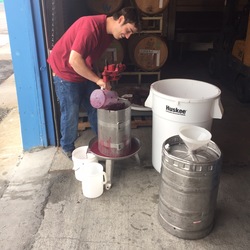



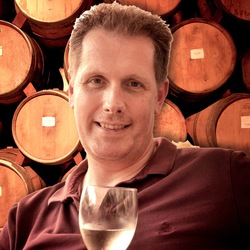
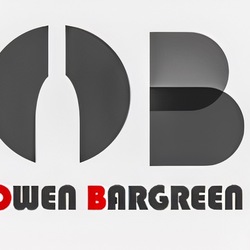




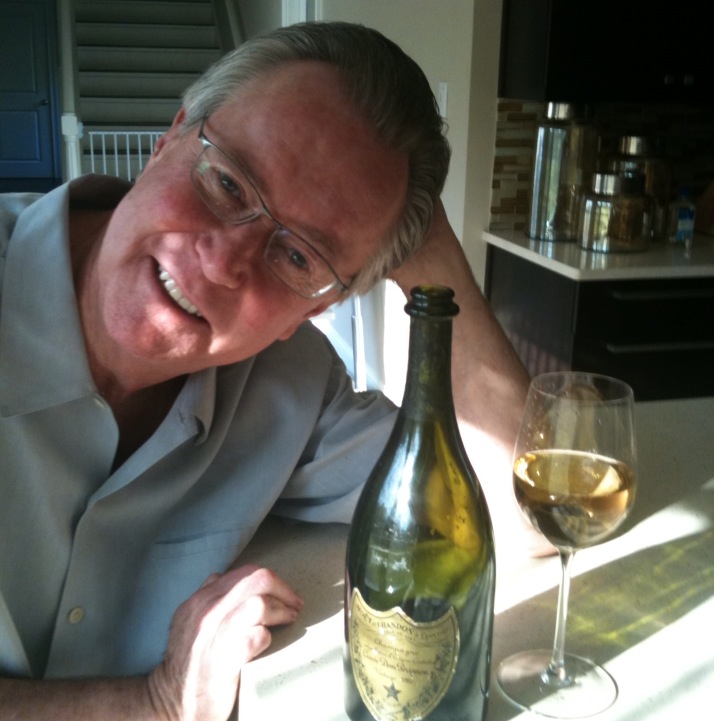
Kirk Irwin
Wonderful strong pear nose, edges of oak. Sipped caramel, slight hot sugar cookie notes. Really great chard. — 6 years ago